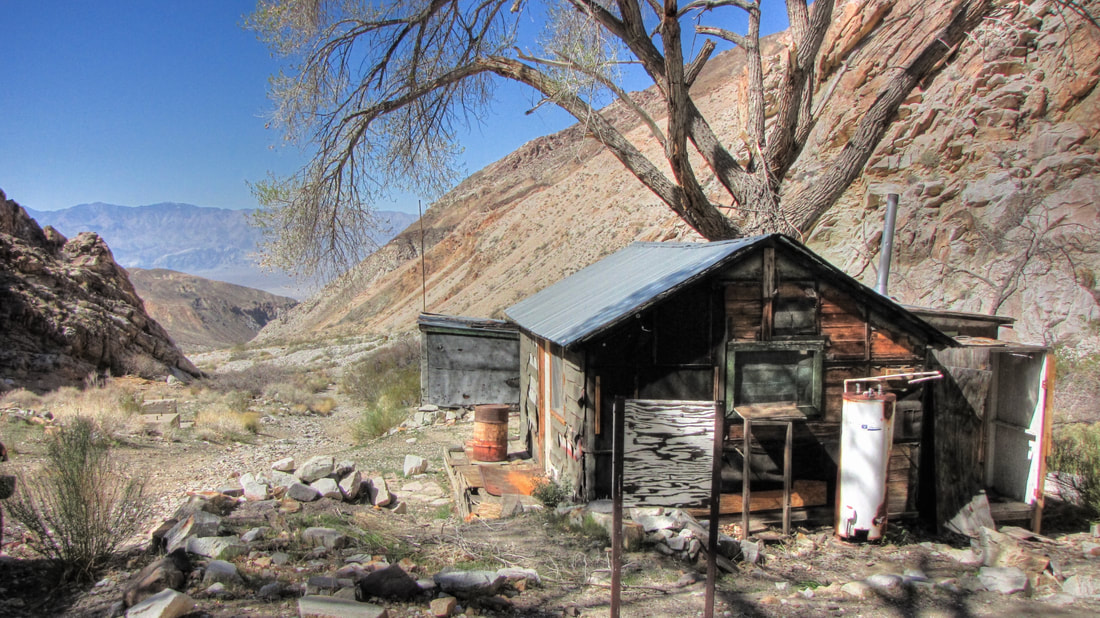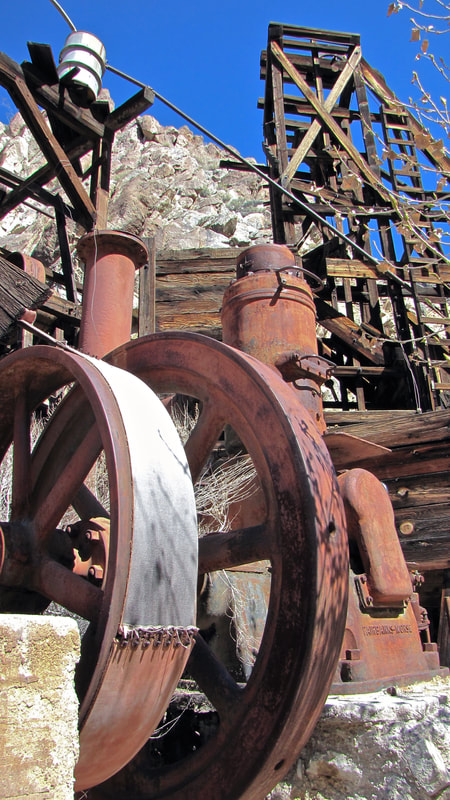Corona Mine, Death Valley

The Corona mine is located at the end of Jail Canyon out of Panamint Valley. The mine was first named the Gem Mine and was mined for silver, lead, and zinc. The Gem Mine was originally claimed by Jack Currant who traded half interest in the mine to Charles Weaver, a Ballarat storekeeper for a 3 stamp mill. The spring in Jail Canyon produced enough water to power the stamp mill by a water wheel which was the first used in the Death Valley area. The mine shipped several thousand dollars of bullion monthly starting in the winter 1899-1900.
In 1949, the previously named Gem and New Discovery lode claims were renamed the Corona, Corona #1, and Corona #2 and sold to a John F. Lee from A. F. Troster. The claims were assigned to the Corona Mining Company out of Trona, California. The gold, silver, lead, and zinc ore taken from the Corona #1 assayed out at $90 per ton. At one time five men were employed at the mine.
Today this is one of the most interesting mines to visit in Death Valley and well worth the time to explore. The spring still produces a good volume of water from a pipe and there are two cabins that have been adopted and maintained. Further up the canyon a short way are extensive mill equipment and abandon ore car tracks. There is also a couple of rusting trucks and other equipment scattered in the general area.
The last few miles up Jail canyon will require a high clearance 4 wheel drive vehicle due to a deep sand wash and many rocks making the ride a little rough.
In 1949, the previously named Gem and New Discovery lode claims were renamed the Corona, Corona #1, and Corona #2 and sold to a John F. Lee from A. F. Troster. The claims were assigned to the Corona Mining Company out of Trona, California. The gold, silver, lead, and zinc ore taken from the Corona #1 assayed out at $90 per ton. At one time five men were employed at the mine.
Today this is one of the most interesting mines to visit in Death Valley and well worth the time to explore. The spring still produces a good volume of water from a pipe and there are two cabins that have been adopted and maintained. Further up the canyon a short way are extensive mill equipment and abandon ore car tracks. There is also a couple of rusting trucks and other equipment scattered in the general area.
The last few miles up Jail canyon will require a high clearance 4 wheel drive vehicle due to a deep sand wash and many rocks making the ride a little rough.

















